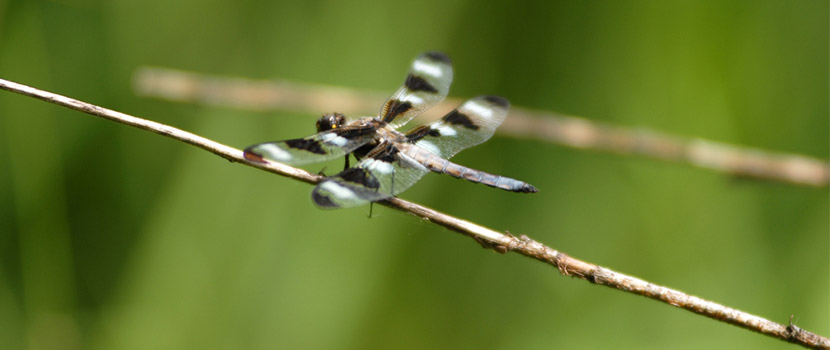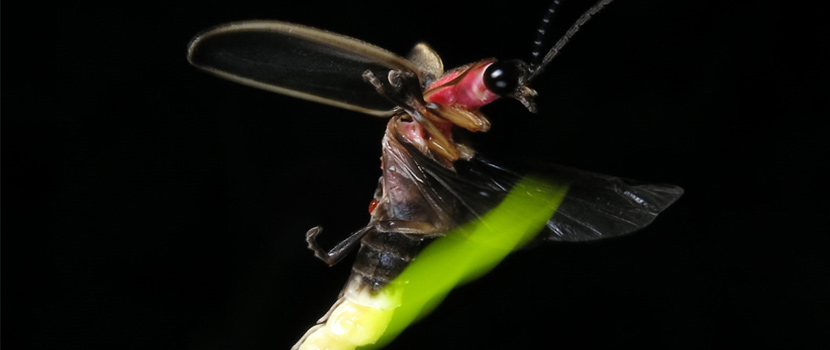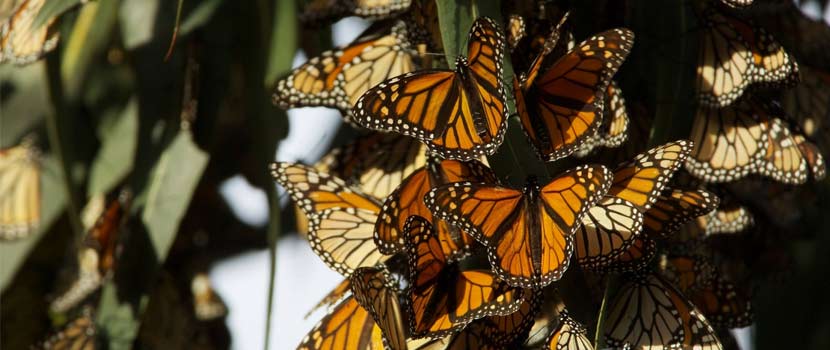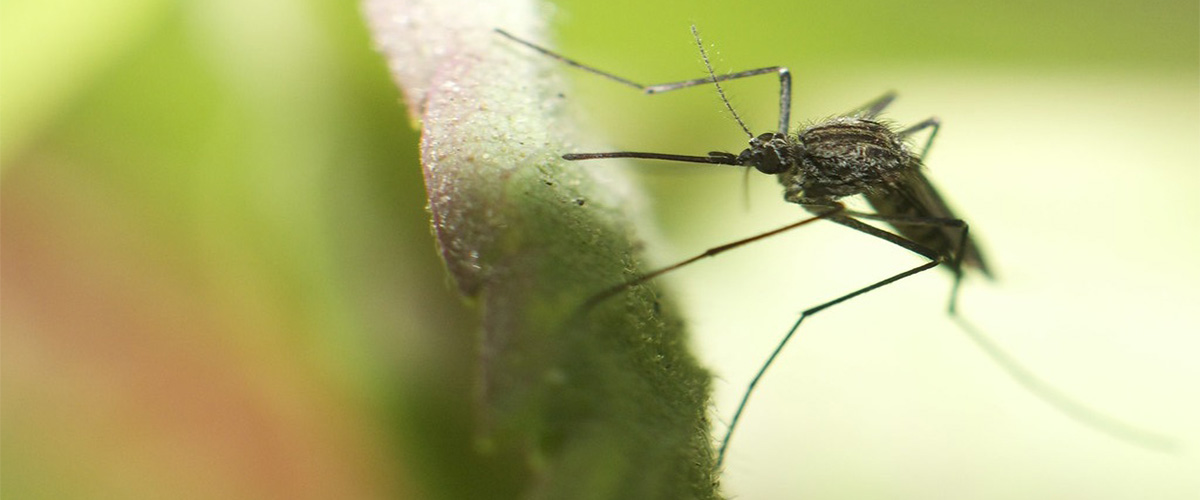
When you mention mosquitos, most people cringe while others involuntarily start scratching. Mosquitos are a nuisance to humans and in some cases can carry diseases that are harmful to humans and animals.
But, they are also an important part to the ecosystems and there are many species of animals that depend on mosquitos, both adults and larva, for food.
Diversity and Natural History
There are 51 species of mosquito in Minnesota, of which 45 species are found in the metro. Half of the species found in and around the Park District feed on humans.
Mosquitos are a small slender fly with long legs. They are a brownish gray with some species having black stripes. Mosquitos have extended mouthparts that allow them to puncture skin and draw blood. Mosquitos do not actually bite; they stick us similar to a hypodermic needle.
Only female mosquitos feed on humans while males feed on flower nectar. Females need a blood meal before they can lay eggs.
Some mosquitos lay their eggs on land in areas that flood in the spring. These eggs can stay dormant for several years waiting for water. Other mosquitos lay their eggs in a wide variety of wetlands, from the edges of large lakes down to small pools of water that can be found in tree holes, buckets or abandoned tires.
Larval mosquitos take from two weeks to many months to develop into adults. The developmental time varies by species and temperature; the warmer the water the faster the development.
Adults can be found in a variety of habitats including urban habitats, especially in areas with heavy vegetation. Shady wooded areas are favorite spots, which are very common throughout the Twin Cities.
The Metropolitan Mosquito Control District (MMCD) focuses on four major groups of human-biting mosquito species: spring Aedes, summer Aedes, Coquillettidia perturbans (cattail mosquito) and disease vectors.
Snowmelt induces spring Aedes (15 species) eggs to hatch in March and April and adults emerge in late April to early May. These species have one generation each season; however, adults can live for three months and lay multiple egg batches.
Summer Aedes (five species) begin hatching in early May in response to rainfall and warmer temperatures. Adults can lay multiple egg batches and live on average two weeks.
Coquillettidia perturbans develops in cattail marshes. There is one emergence, which begins in early June, peaking around July.
Mosquito Control in the Parks
The Park District works with MMCD to control mosquito larva in most of our parks. They monitor wetlands across Three Rivers and treat sites with high numbers of larva.
They use growth regulators and bacteria to kill the larva. These control materials are very specific to mosquitos and do not impact other insects or wildlife. They treat by hand and with helicopter applications.
Low flying helicopters over wetlands is a common site throughout Hennepin County in the spring and summer. Treatments have to be repeated after significant rainfalls. The added water to the wetlands triggers more mosquito eggs to hatch.
Three Rivers does not allow spraying or fogging by MMCD or other agencies to kill adult mosquitos in any parks, trails or special recreation features. Past use of these treatments have been shown to be short-lived. The insecticides used in these adult treatments are not specific to mosquitos and kill a number of beneficial insects, including bees, fireflies, dragonflies and butterflies.
Personal Mosquito Treatments in the Parks
At Three Rivers, we do allow and encourage the use of personal sprays that contain DEET or natural oils, citronella candles and torches and mosquito coils.
Wearing long pants and long-sleeve shirts, especially in the evening will help reduce mosquito “bites.” The use of screen tents can also protect against mosquitos in picnic areas and campgrounds. Mosquito traps that do not emit insecticides can be used in the campgrounds, too.
The Park District does not allow the use of aerial insecticides or foggers (aerosol and propane) by the public in Three Rivers.
Mosquito Treatments at Home
Many of the same personal treatments used in the park are recommended for home. The use of personal sprays and long-sleeved clothing are the best for being outside in the evening. Screen porches and tents are also helpful if you are going to be sitting outside.
An open landscape allows for the breeze to move the air through your yard. Mosquitos are less active when there is a breeze. The removal of “harborage” areas, which are areas of low dense vegetation, reduces places for mosquitos to hide during the day.
Removing, or regularly cleaning, water sources where mosquitos lay their eggs is also very beneficial. This includes bird baths, stray buckets or containers, tarps or anything else that can hold water for more than a week.
Archive and banner image: "Resting Mosquito" by fine_plan is licensed under CC BY-NC 2.0.
About the Author
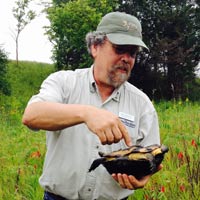
John Moriarty is the Senior Manager of Wildlife at Three Rivers Park District and has been with the Park District for 15 years. He has been involved in many of the wildlife restoration efforts and initiated the snake and butterfly efforts. John has led several projects to increase prairie habitat in the Park District. John likes exploring natural areas and looking for all types of plants and animals, but especially turtles.
Related Blog Posts
Fun Facts About Dragonflies
By: Angela Grill
Dragonflies are one of the most ancient insects and were one of the first species of winged insects to evolve. Learn more about their dual lives in the water and on land and the best places to find them in the parks.
Species Spotlight: The Magic of Fireflies
By: Miranda Jones
Fireflies evoke a sense of childlike wonder and delight. Learn what makes them glow, the threats to their population, and what you can do to protect them.
Pollinators: The Great Monarch Migration
By: Elaine Tucker
Have you ever wondered what a monarch tag is or why we tag monarch butterflies? Read on to discover more about these beautiful insects and their incredible 2,000-mile migration.
